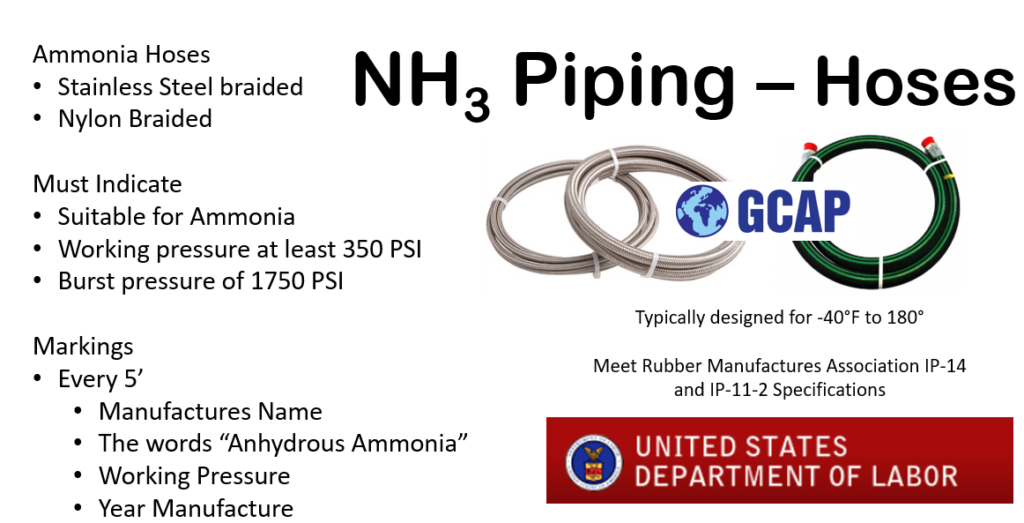On July 15th, 2009, at approximately 8:00 am, a release of about 7,000 pounds of anhydrous ammonia occurred. The cloud produced from the release drifted from the plant, across a highway, and in to a wooded area. At the same time, a motorist traveling on the highway entered the cloud of ammonia and subsequently lost her life. Seven other people were treated for ammonia exposure and released the same day. The National Transportation Safety Board investigated the incident and found the cause to be the use of a hose that was not compatible with anhydrous ammonia.
Several of these completely avoidable incidents have happened, and continue to happen. Hoses used to transfer from trucks to distribution center storage tanks are covered under different standards than hoses used for transferring ammonia in refrigeration systems, but they still require the same care and attention. Additionally, it would be in a refrigeration operators’ best interest to pay particular attention to the hoses used when connecting trucks to their system to take an upcharge.
An operator should ensure that any hose connected to their system, whether to charge the system or to transfer ammonia within the system, conforms to generally accepted good engineering practices, such as;
- Only use hoses that are commonly used with anhydrous ammonia, such as steel or nylon braided
- Only use hoses that indicate compatibility with ammonia, are rated to at least 350psi with a burst pressure of at least 1,750psi
- Never use hoses beyond the manufacturer’s recommended expiration date
- Never use old or damaged hoses
Additionally, an operator should exercise care when handling or storing ammonia hoses. Avoid contact between the hose and sharp or abrasive surfaces, avoid stress on hose ends, never use the hose above its rated pressure, avoid rapid pressure changes in the hose, do not kink the hose, and of course, avoid running over the hose with fork trucks and the like.
When storing hoses, you should store the hose in its original shipping packaging if possible. Also be sure to protect the hose from environmental conditions that could damage it, extreme temperatures, extreme humidity levels, sunlight, pests, chemicals, etc.
Ammonia hoses at your facility must be incorporated into the overall process safety management program, and the mechanical integrity element requires routine inspection and testing of hoses.
Inspect hoses and connectors prior to each use, looking for loose cover, kinks, and bulges or soft spots that may indicate integrity issues.
Periodically hoses must be tested hydrostatically;
- 1 minute at 1 ½ times the recommended working pressure
- Only test hose when it is straight
- Flush the hose with alcohol to remove trace moisture
When testing hoses, special precautions should be taken in the event of a test failure;
- Never used compressed gas for the test
- Bleed air through a valve when filling
- Place steel rods every 10 feet to prevent whipping
- Do not stand in front of or in back of hose during testing.
- All couplings or fittings should be inspected as well.
Improper fittings or fittings improperly installed have also contributed to hose failures. Traditionally, the preferred method for coupling ammonia hoses has been a permanent crimped on fitting. This is the safest method as well as requiring the least amount of maintenance. When using clamp bolt fittings, retightening of the bolts is required periodically to maintain the safety of the fitting.
As with all refrigeration equipment, it is required that operators be trained on the safe use and handling of ammonia hoses.
Following these recommendations should minimize the potential of unintended releases caused by transfer hoses, remember, keeping it in the pipes also includes keeping it in the hoses.


